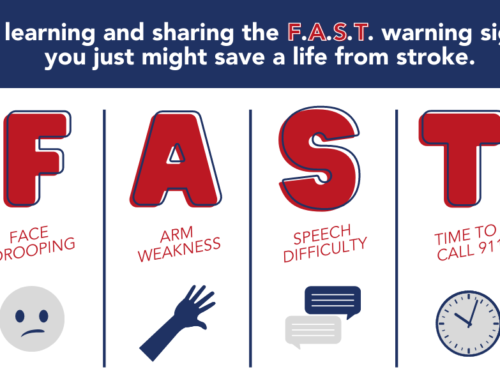 A stroke occurs when the brain is denied oxygen-rich blood. Strokes are caused because of a blockage, such as a clot, or by a ruptured or leaking artery. More than 795,000 people have a stroke each year in the United States, and many are life-threatening. According to the American Heart Association, strokes are a top cause of death and disability in the United States.
A stroke occurs when the brain is denied oxygen-rich blood. Strokes are caused because of a blockage, such as a clot, or by a ruptured or leaking artery. More than 795,000 people have a stroke each year in the United States, and many are life-threatening. According to the American Heart Association, strokes are a top cause of death and disability in the United States.
The encouraging side of this is that up to half of all strokes can be prevented, and increasing your knowledge of certain risk factors can help you lower your individual risk.
High Blood Pressure, Cholesterol, and Blood Sugar
The major risk factor for ischemic (blockage) strokes is hypertension, or high blood pressure. If your blood pressure remains elevated for a long duration of time, you are at a higher risk of having a stroke.
High cholesterol happens when you’re ingesting more cholesterol than your body needs. The extra cholesterol starts to accrue within arteries and can cause narrowing of the arteries, as well as stroke.
Diabetes (type 1 or 2) is both an independent risk factor for strokes and correlated with increased levels of high blood pressure and unhealthy levels of cholesterol. The target fasting blood sugar level is 80-130 mg/dL.
Monitor and manage your blood pressure, cholesterol, and blood sugar to keep these risk factors under control and lessen your chances of other complications.
Use of Nicotine and Other Drugs
Smoking, along with raising blood pressure, reduces the amount of oxygen in your blood and can damage blood vessels. Even if you are not a smoker, consistent exposure to secondhand smoke makes you more likely to have a stroke, according to the Centers for Disease Control and Prevention (CDC). The advice here is: If you are a smoker, consider cessation techniques, and if you are not a smoker, do not start.
Abuse of drugs — including cocaine, LSD, heroin, and amphetamines, as well as alcohol —also increases your risk factor for a stroke.
Lifestyle Variables
Overweight or obese people have higher risks of strokes, as do those who suffer from depression or high levels of stress. Diets high in fat, calories, and sodium can raise cholesterol and increase blood pressure; conversely, diets rich in fruits and vegetables can lower your stroke risk.
Furthermore, a sedentary lifestyle increases the likelihood of high blood pressure, obesity, high cholesterol, and diabetes. Reduce your risk of these conditions — as well as stroke — by incorporating regular movement into your routine. Research shows that an hour-long walk, five times a week, can cut your risk of stroke by nearly half. If that’s intimidating, remember that every little bit counts — start by adding just 15-30 minutes of activity into your daily routine.
Pre-Existing Diseases and Conditions
These diseases and conditions can all increase the risk of stroke or cause one:
- Coronary heart disease
- Carotid artery disease
- Peripheral artery disease
- Heart valve disease
- Atrial fibrillation
- Brain aneurysms
- Faulty arteries or veins
- Vasculitis
- Sickle cell diseases
- Bleeding disorders
Atrial fibrillation alone increases the risk of a stroke up to sixfold. Understanding your medical conditions and how they affect your body overall is key. Always ask your doctor if you have any questions about how to best manage a diagnosis.
Demographic Risks
Many of the above factors are under your control to at least some degree, but your genetic makeup also plays a large part in stroke risk.
Age and Sex
Stroke happens more often to women, though men and women both have increased risk of a stroke as age increases. According to the CDC, the chance of a stroke doubles roughly every ten years after the age of 55. Women are also more likely than men to die of a stroke, and using birth control pills or being pregnant both slightly increase stroke risk.
Race and Ethnicity
Your race affects your likelihood of experiencing a stroke, as many minority groups have increased risk factors. When compared to Caucasian populations, these groups have a higher likelihood of experiencing a stroke:
- African Americans (twice as likely)
- American Indians (2.4 times as likely)
- Alaskan Natives (2.4 times as likely)
- Native Hawaiians and Pacific Islanders (four times as likely)
Hispanic Americans are more likely than their Caucasian peers to experience a stroke at a younger age —and more likely to die of one. Lastly, Asian Americans have a lower likelihood than other racial cohorts of experiencing a stroke.
You are at a higher risk if a close family member such as a parent, grandparent, sister, or brother has had a stroke, or if you have previously experienced one.
If you want to learn more about your own stroke risk, take a free stroke risk assessment test here. You can also schedule a consultation with Tri-City medical staff to evaluate your individual health history and create a plan to minimize your risk of a stroke. Tri-City’s award-winning Stroke Care Center offers a variety of programs and services to meet your needs.





![Side Effects of a Stroke [INFOGRAPHIC]](https://www.tricitymed.org/wp-content/uploads/2018/04/shutterstock_596475470-500x383.jpg)